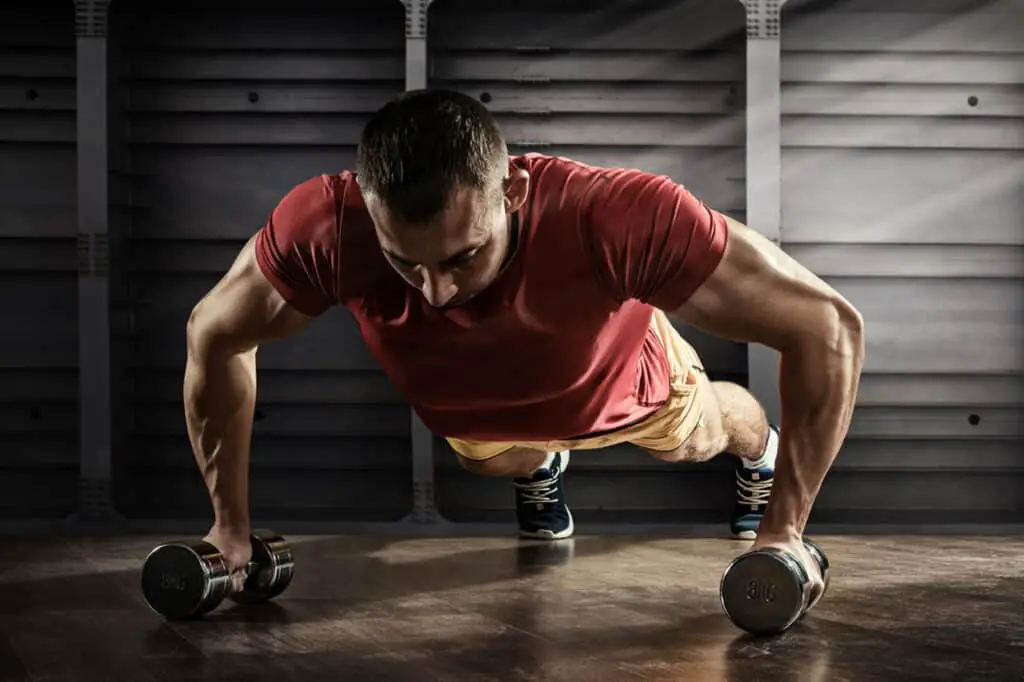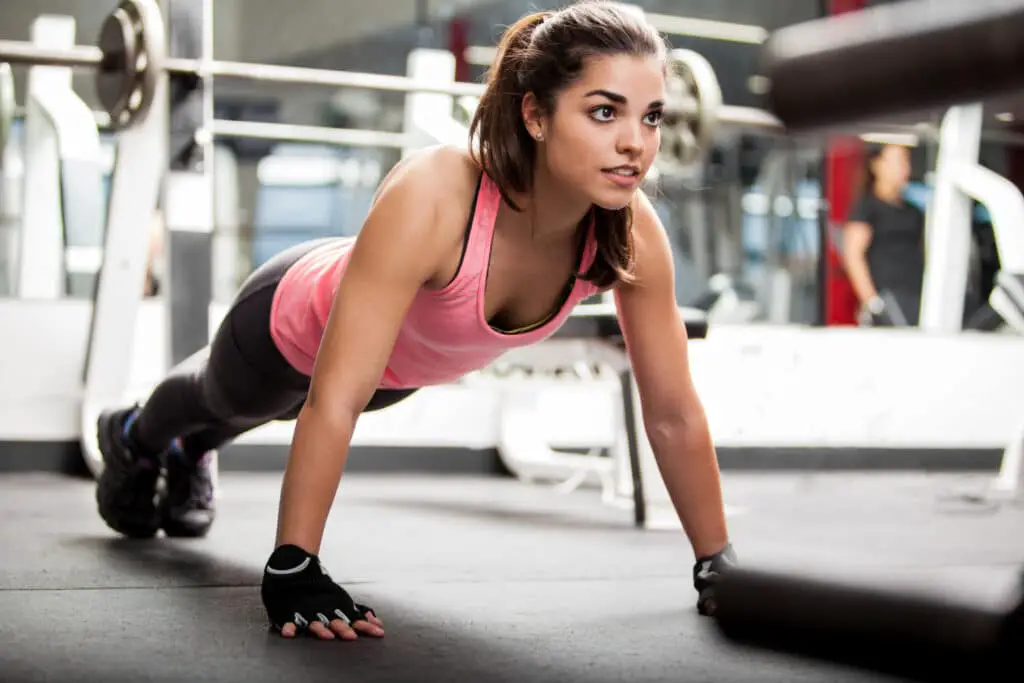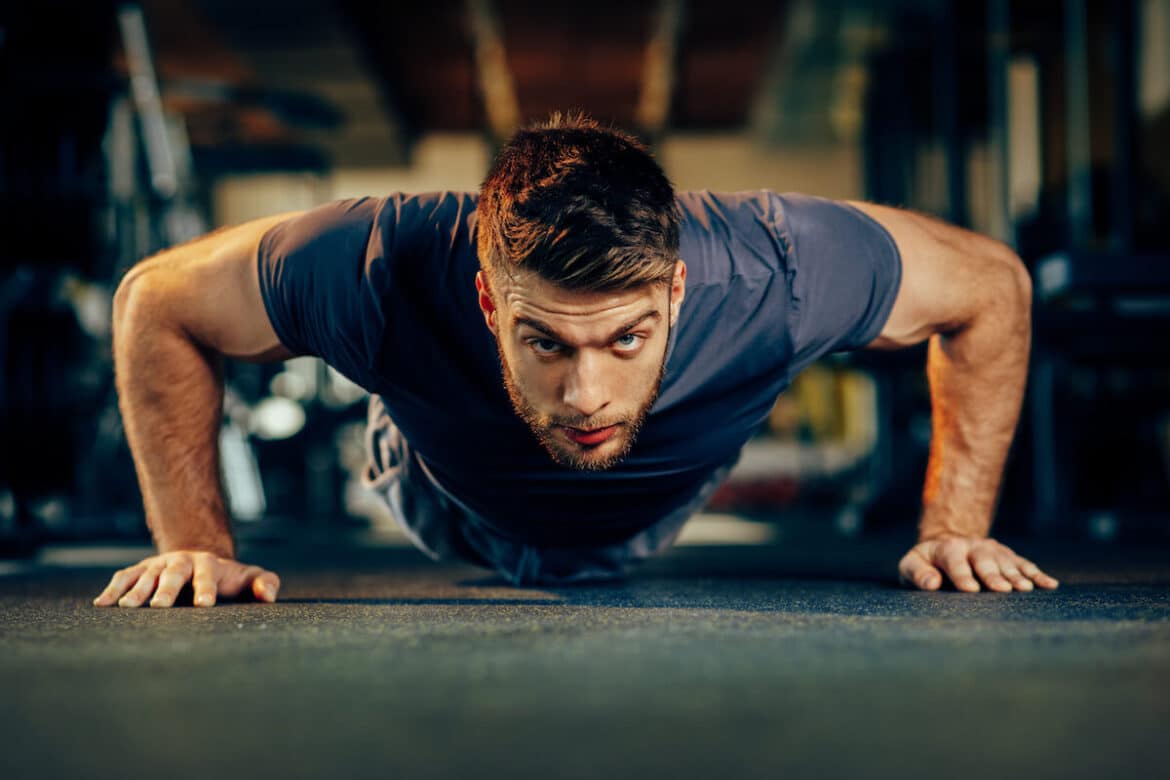Introduction
What Is A Push Day Gym: A push day at the gym is a dedicated workout session focused on exercises that involve pushing movements primarily targeting the muscles of the upper body. It forms a fundamental component of many strength training and fitness routines, aiming to develop and enhance muscular strength, endurance, and overall physique. During a push day, individuals engage in a carefully curated selection of exercises designed to challenge muscles while emphasizing pushing motions against resistance.
Push day workouts typically concentrate on muscles involved in pushing actions, including the chest, shoulders, and triceps. These workouts are strategically designed to complement other training days, such as pull days (which target muscles involved in pulling movements like the back and biceps) and leg days (which focus on lower body muscles).
The exercises incorporated into a push day routine are chosen to effectively stimulate muscle growth and strength development. Common exercises often found in a push day workout include bench presses (flat, incline, or decline), overhead presses, push-ups, chest flies, tricep dips, and shoulder presses. These movements involve pushing weights away from the body, either vertically or horizontally, challenging muscles and promoting muscle hypertrophy.

What is a push day at the gym?
In the “push” workout you train all the upper body pushing muscles, i.e. the chest, shoulders and triceps. In the “pull” workout you train all the upper body pulling muscles, i.e. the back and biceps. And in the “legs” workout you train the entire lower body, i.e. the quads, hamstrings, calves and abdominals.
A push day at the gym is a designated workout session focused on exercises that involve pushing movements, primarily targeting the muscles of the upper body. The aim of a push day is to strengthen and develop muscles involved in actions where resistance is overcome by pushing weight away from the body. These movements typically engage muscles of the chest, shoulders, and triceps, contributing to improved upper body strength, muscle definition, and overall fitness.
During a push day, individuals engage in a variety of exercises that challenge the muscles responsible for pushing actions. The workout regimen is carefully designed to provide balanced development, prevent muscle imbalances, and promote overall functional strength. Common exercises included in a push day workout often consist of:
Bench Press: This exercise involves lying on a bench and pushing a barbell or dumbbells upwards, primarily targeting the chest, shoulders, and triceps.
Shoulder Press: Also known as the overhead press, this movement involves lifting weights overhead while standing or seated. It primarily targets the shoulders and triceps.
Push-Ups: A bodyweight exercise where individuals push their body off the ground using their arms, engaging the chest, shoulders, and triceps.
Chest Flyes: This exercise involves lying on a bench and using weights to simulate a hugging motion. It primarily targets the chest muscles.
Tricep Dips: Using parallel bars, this exercise focuses on extending and contracting the arms to target the triceps.
Incline or Decline Press: Similar to the bench press, these variations involve adjusting the bench angle to emphasize different parts of the chest.
The intensity, sets, repetitions, and rest periods of a push day workout can vary based on individual fitness goals, experience, and training level. It’s important to prioritize proper form and technique to avoid injury and maximize the effectiveness of the exercises.
Push days are often structured as part of a larger workout routine that includes other specific training days, such as pull days (targeting muscles involved in pulling actions) and leg days (focusing on lower body muscles). This balanced approach helps create a well-rounded fitness regimen that ensures comprehensive muscle development and overall functional strength.
What are push vs pull gym days?
A push-pull training split generally refers to workouts centered on muscle groups that perform similar actions. “Push” workouts train the chest, shoulders, and triceps, while “pull” workouts train the back, biceps, and forearms. A day for training the lower body and core is also included in this training split.
Push and pull gym days are two distinct types of workout sessions that focus on different sets of movements and muscle groups. These terms are commonly used in strength training and fitness to categorize exercises based on the primary action involved. Understanding the difference between push and pull gym days can help individuals create well-balanced workout routines that target various muscle groups effectively.
Push Gym Day:
On a push day, the emphasis is on exercises that involve pushing movements, where the resistance is overcome by pushing weight away from the body. The primary muscle groups targeted on a push day are the chest, shoulders, and triceps. Some common push exercises include:
Bench Press: Targets the chest, shoulders, and triceps.
Shoulder Press: Focuses on the shoulders and triceps.
Push-Ups: Engages the chest, shoulders, and triceps.
Chest Flyes: Targets the chest muscles.
Tricep Dips: Primarily targets the triceps.
Overhead Press: Concentrates on the shoulders and triceps.
Push day workouts help improve upper body strength, muscle definition, and pushing power. They also enhance functional strength for activities that involve pushing motions.
Pull Gym Day:
Pull days, on the other hand, center around exercises that involve pulling movements, where the resistance is overcome by pulling weight towards the body. Pull workouts predominantly target the muscles of the back, biceps, and rear shoulders. Some common pull exercises include:
Pull-Ups: Engage the back and biceps.
Rows (Barbell, Dumbbell, Cable): Target the back muscles.
Lat Pulldowns: Focus on the lats and biceps.
Face Pulls: Concentrate on the rear deltoids and upper back.
Bicep Curls: Primarily target the biceps.
Deadlifts: Engage the entire posterior chain, including the back, glutes, and hamstrings.
Pull day workouts enhance back strength, posture, and pulling abilities. They contribute to balanced muscle development and improve overall upper body strength.
In a well-structured workout routine, push and pull days are often alternated with rest or other types of workouts, such as leg days. This approach ensures that the muscles get adequate time to recover between intense sessions while also preventing muscle imbalances.
What should I do on push day gym?
This typically means compound pressing exercises like the bench press, overhead press, and push-ups, but also isolation exercises for your push muscles, like tricep extensions and lateral raises.
On a push day at the gym, your focus will be on exercises that involve pushing movements, primarily targeting the muscles of the chest, shoulders, and triceps. These exercises aim to improve upper body strength, muscle definition, and functional pushing power. Here’s a sample push day workout routine that you can consider:
Warm-up:
Begin with a 5-10 minute cardiovascular warm-up, such as brisk walking, jogging, or cycling. This helps increase blood flow to your muscles and prepares your body for the workout.
Push Day Workout:
Bench Press: 3 sets of 8-10 reps
Target: Chest, shoulders, triceps
Use a barbell or dumbbells, and focus on proper form and controlled movements.
Overhead Shoulder Press: 3 sets of 8-10 reps
Target: Shoulders, triceps
Use a barbell or dumbbells, and ensure your core is engaged for stability.
Incline Dumbbell Press: 3 sets of 10-12 reps
Target: Upper chest, shoulders, triceps
Perform on an incline bench for a different angle of chest engagement.
Tricep Dips: 3 sets of 10-12 reps
Target: Triceps
Use parallel bars or a dip station for this exercise.
Push-Ups: 3 sets of 12-15 reps
Target: Chest, shoulders, triceps
Modify the difficulty based on your fitness level, using standard or incline push-ups.
Seated Shoulder Press Machine: 3 sets of 10-12 reps
Target: Shoulders, triceps
Use a shoulder press machine for controlled and supported movements.
Chest Flyes: 3 sets of 10-12 reps
Target: Chest muscles
Use dumbbells or a cable machine to perform this exercise.
Cool-down:
Finish your push day workout with a 5-10 minute cool-down, focusing on light stretching for the muscles you’ve worked during the session. This can help improve flexibility and reduce post-workout muscle soreness.
Remember to choose weights that challenge you but still allow you to maintain proper form. Rest for 1-2 minutes between sets to allow your muscles to recover before the next set. Additionally, listening to your body and adjusting the workout intensity based on your fitness level is crucial for a safe and effective workout.
Are squats push or pull?
The primary muscles in a push workout includes chest, triceps, quadriceps, calves and shoulders. Examples of push exercises are push-ups, squats, and the shoulder press.
Squats are generally considered a leg exercise and do not fall exclusively into the categories of “push” or “pull” movements. Instead, squats are classified as a compound movement that primarily targets the muscles of the lower body, particularly the quadriceps, hamstrings, glutes, and lower back.
Squats involve a combination of both pushing and pulling actions:
Pushing: During a squat, the upward phase of the movement involves pushing against the ground to lift the weight (your body or added resistance) back to the starting position. This pushing action engages the quadriceps and glutes.
Pulling: The downward phase of the squat requires controlled lowering of the weight, which can be thought of as a pulling action. The muscles engaged during this phase include the hamstrings and lower back, which help stabilize the movement and control the descent.
Because squats involve a balanced engagement of various muscle groups and both pushing and pulling actions, they are often considered a foundational movement that contributes to overall lower body strength and stability. Squats can be a part of leg day workouts or full-body workout routines, helping to enhance muscle development, functional strength, and athletic performance.
Are skull crushers push or pull?
As previously explained, skull crushers are a single-joint exercise isolating the triceps. “They’re also a ‘push’ exercise and are therefore suitable for workouts in push-pull programs, and also work as an opposing muscle group exercise if you’re working on the biceps, for example,” says Flynn Endres.
Skull crushers, also known as lying tricep extensions, are typically considered a triceps isolation exercise, and they are commonly associated with push workouts. This is because the primary movement involves extending the arms by pushing the weight away from the body, engaging the triceps muscles. The triceps are prominently involved in pushing actions, which is why skull crushers are often included in push day routines.
During skull crushers, you lie on a bench while holding a barbell or dumbbells above your chest. The movement involves bending and extending your elbows to lower and raise the weight, respectively. This action of extending the arms against resistance targets the triceps muscles.
While skull crushers are primarily categorized as a push exercise, they can also involve elements of stabilization from the shoulders and upper back. This makes them a versatile exercise that can be included in both push day and triceps-focused workouts.
If you’re structuring your workout routine and wondering whether to include skull crushers on a push day or a triceps-focused day, it’s generally most common to include them on your push day, alongside other compound and isolation exercises that target the chest, shoulders, and triceps. However, you can adjust their placement based on your preferences and overall workout plan.
Is A deadlift push or pull?
The deadlift is characterized as a pull exercise because it involves exerting force to move the weight towards us. This means that the muscles involved in the deadlift are contracting as the weight moves towards us to the lockout position, and are lengthening as the bar travels back down to the ground.
A deadlift is generally classified as a “pull” exercise. It falls under the category of compound movements that involve lifting a weight (such as a barbell) from the ground to a standing position. Deadlifts primarily target the muscles of the posterior chain, which includes the muscles of the back, glutes, hamstrings, and lower back.
In a deadlift, you are pulling the weight off the ground, which is why it’s categorized as a pulling movement. The motion involves lifting the weight by extending the hips and knees while maintaining a straight back. The muscles engaged during a deadlift include:
Back Muscles: The muscles of the upper and lower back, particularly the erector spinae, play a significant role in maintaining proper spinal alignment and stability during the lift.
Glutes: The gluteus maximus muscles are heavily engaged to extend the hips as you lift the weight.
Hamstrings: The hamstrings work to extend the hips and bend the knees during the lifting phase.
Forearms and Grip: The grip strength is also challenged during deadlifts as you need to hold onto the barbell throughout the movement.
While deadlifts are primarily classified as a pulling exercise, they also engage other muscle groups to a lesser extent, including the core, quadriceps, and even the shoulders. Due to their compound nature, deadlifts are considered one of the most effective exercises for developing overall strength, functional power, and muscle mass in multiple areas of the body.
Are abs push or pull?
Because abs are used in both pushing and pulling actions, they can be trained several times per week – just choose different exercises for each session. You could also try splitting your midsection routine into abdominal and core workouts, training abs on pull day and doing core strengthening on push day.
The muscles of the abdominal region, commonly referred to as the “abs,” are not specifically classified as either “push” or “pull” muscles. Instead, they are often considered stabilizing muscles that assist in various movements and contribute to core stability and posture.
The abs include several muscles, such as the rectus abdominis (the “six-pack” muscle), the external and internal obliques (located on the sides of the abdomen), and the transverse abdominis (a deep muscle that wraps around the core). These muscles play a crucial role in maintaining proper posture, stabilizing the spine, and providing support during a wide range of movements.
While the abs themselves are not categorized as push or pull muscles, they are engaged in both push and pull movements, as well as many other types of exercises:
Push Movements: During exercises that involve pushing, such as push-ups, overhead presses, and bench presses, the core muscles engage to stabilize the spine and provide a strong base for the movements.
Pull Movements: In pulling exercises like pull-ups, rows, and deadlifts, the core muscles help stabilize the spine and assist in maintaining proper form.
Stabilization: The abs play a significant role in stabilizing the spine during activities that require balance, such as squats, lunges, and even standing on one leg.
Functional Movements: Core engagement is essential in activities of daily living, such as lifting objects, carrying groceries, and maintaining an upright posture while sitting or standing.
Can I do triceps on pull day?
Triceps can be worked on push or pull day. Push day has the advantage of having your elbows already warm and allowing more days rest between triceps work.
Yes, you can include triceps exercises on a pull day if you’d like to target your triceps while also focusing on pulling movements. While triceps are often associated with push day workouts due to their involvement in pushing motions, it’s possible to incorporate triceps exercises on a pull day as well.
Here’s a common rationale for including triceps exercises on a pull day:
Compound Movements: Pull day workouts typically focus on compound exercises that primarily target the back, biceps, and rear shoulders. Including triceps exercises on a pull day allows you to work on other muscle groups while still addressing your triceps.
Efficiency: By including triceps exercises on a pull day, you can maximize your time at the gym by targeting multiple muscle groups in a single session.
Balanced Muscle Development: Balancing your workout routine by targeting various muscle groups can help prevent muscle imbalances and enhance overall functional strength.
If you decide to include triceps exercises on a pull day, consider selecting exercises that complement your overall routine and allow you to maintain proper form. Some triceps exercises you can include are:
Tricep Dips
Skull Crushers (lying tricep extensions)
Tricep Rope Pushdowns (using a cable machine)
Close-Grip Bench Press

Conclusion
Push day workouts extend beyond mere physical gains, offering a holistic approach to well-being. The engagement of various muscle groups fosters a sense of accomplishment and self-improvement, leading to increased self-confidence and a positive outlook on one’s fitness journey.
Incorporating the principles of a push day gym session into a comprehensive fitness plan can create a balanced and efficient approach to strength development. As part of a larger workout regimen that encompasses pull days, leg days, and rest days, push days contribute to a harmonious progression towards improved overall strength and fitness.
Moreover, push day workouts are adaptable and versatile, catering to individuals across different fitness levels and goals. Whether one aims to sculpt a defined physique, enhance athletic performance, or simply embrace a healthier lifestyle, the principles of a push day gym session can be tailored to suit individual aspirations.
As the fitness landscape continues to evolve, the importance of well-structured workout routines like push day sessions remains steadfast. By consistently integrating push day workouts into a fitness routine and focusing on proper form and progression, individuals can unlock the potential for transformative physical changes and long-term well-being. Ultimately, the journey towards a stronger, healthier self begins with understanding and embracing the principles of a push day gym session as an integral part of a holistic fitness journey.

